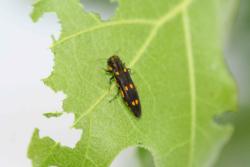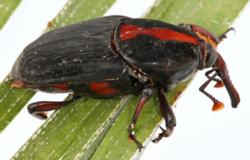Pests And Weeds

Asian Citrus Psyllid Adult. Photo by M.Rogers

Gold Spotted Oak Borer Adult on Leaf. Photo by Tom W. Coleman

Red Palm Weevil. Photo by J. Kabashima
Integrated pest management (IPM) is an approach that avoids or limits pest damage with minimum adverse impact on people, the environment, and non-pest organisms. It employs identification and monitoring of pests and pest activity and integration of biological, cultural, mechanical, and chemical control practices. Chemical pesticides are used only if pest monitoring deems they are needed and can be employed so that they avoid disrupting other elements of an IPM strategy.
Fortunately, the University of California offers a very rich source of landscape IPM information on the Web. Reliable IPM information and pest control recommendations are found at UC's Statewide Integrated Pest Management Program website.
